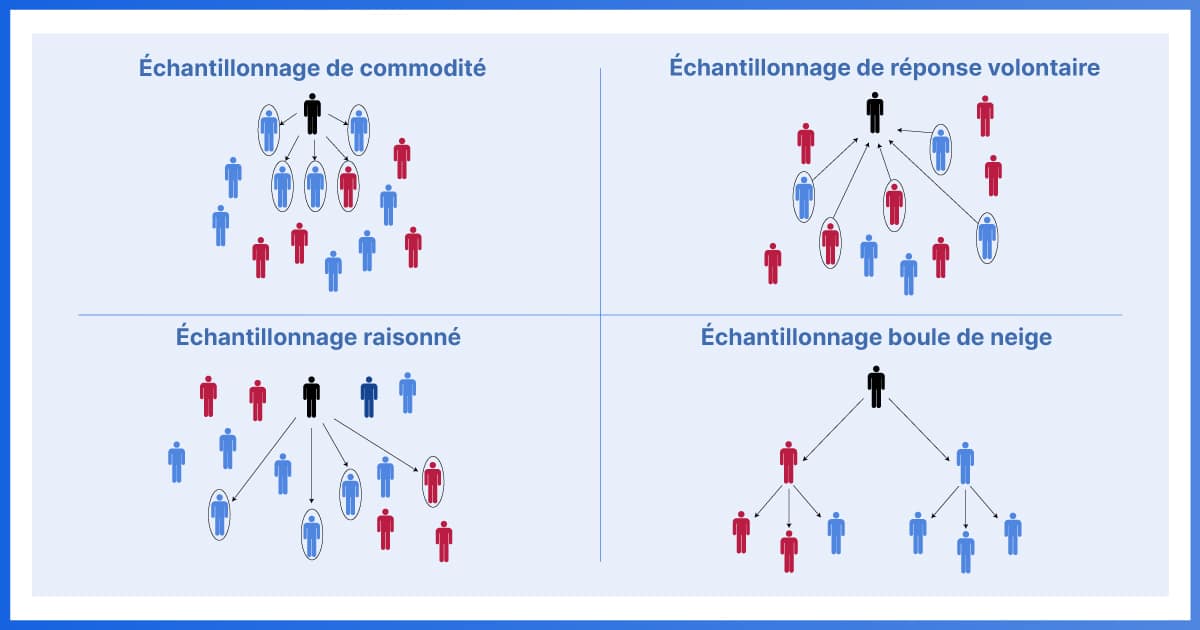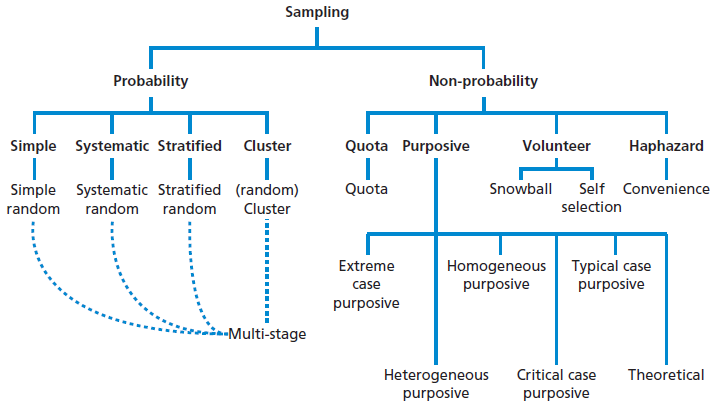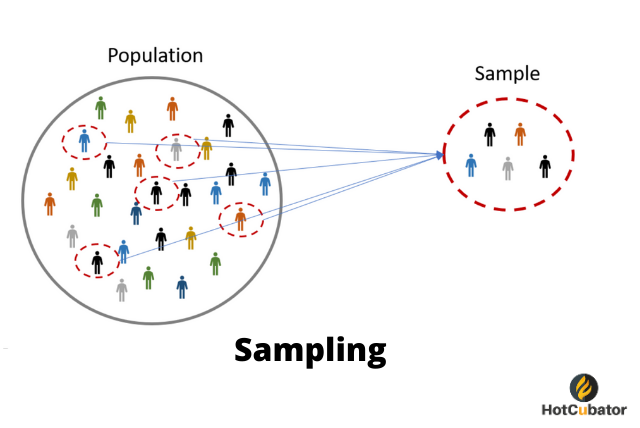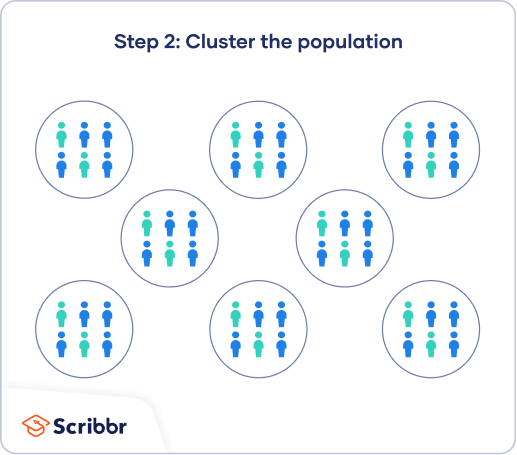4 Describe the Methods Commonly Used for Selecting Samples
This non-probability sampling method is very similar to convenience sampling with a slight variation. Researchers and recruiters rely on four types of commonly used techniques including.

Research Proposal에 대한 이미지 검색결과 Research Proposal Example Research Proposal Writing A Research Proposal
A clinical selection approach is probably the most common selection method and it involves all who will be making the decision to hire a candidate.

. The hospital staff would like to take a sample of 30 rooms. Steps in selecting a systematic random sample. Every possible combination of elements in the population has an equal chance of being included in the sample.
If the genetic correlation is positive the one trait may also improve another. Quantitative Methods Part One. The process of selecting a sample is known as sampling.
Cognitive ability assessments are a form of pre-employment testing used to evaluate how well candidates use a wide range of mental processes such as working with. The decision makers review the data and based on what they learn from the candidate and the information available to them decide who should be hired for a job. Describe how to select a stratified random sample of 30 rooms.
Systematic Sampling Simple Random Sampling Stratified Sampling and Cluster Sampling. Discuss three commonly. Selection methods or screening devices include application blanks employment interviews aptitude tests and personality test.
The reason is that in such a situation the likelihood of establishing contact or receiving a response from an individual is often correlated with the measure of what is to be estimated. In this section we briefly describe three of the most common sampling methods used in qualitative research. A selection method to select for one trait until the trait is at a satisfactory achievement.
Simple random sample selection. As seen in the diagram below it involves choosing a topic writing research questionshypotheses and designing your study. A Sample description b Time sample was taken c Location sample was taken from d Person who took the sample and e Method used to select the sample.
Study population such as size and diversity determine which and how many people to select. ISA recognizes that there are many methods of selecting a sample but it considers five principal methods of audit sampling as follows. There are lot of sampling techniques which are grouped into two categories as.
If we are unable to sample all the individuals initially included in the sample there may arise a systematic bias. Convenience sampling is perhaps the easiest method of sampling because participants are selected based on availability and willingness to take part. Purposive sampling quota sampling and snowball sampling.
1 Random selection 2 Systematic selection 3 Monetary unit sampling 4 Haphazard selection and. But sampling has long been a central concern in the social and humanistic inquiry albeit in a different guise suited to the different goals. The population is selected arbitrarily.
Disadvantages are it takes time and effort and it the least efficient method. Types of Selection Methods. Application forms are a means of collecting written information about an applicants education work and non-work experiences both past.
Best employee selection methods for choosing top talent 1. As data collectors you will not be responsible for selecting the sampling method. In a systematic sample after you decide the sample size arrange the elements of the population in some order and select terms at regular intervals from the list.
Calculation cluster sampling convenience sampling data distort findings introducing bias non-probability sampling optimized sample purposive sampling random number randomization process sample selection sample size sampling frame simple random sampling snowball sampling stratified random sampling systematic sampling theoretical. Planning your study is one of the most important steps in the research process when doing quantitative research. Laboratory samples should always be labeled carefully so that if any problem develops its origin can easily be identified.
Sample is the subset of the population. Medium Directed sample selection is the selection of each item in the sample based on some judgment criteria established by the auditor. The main advantage of using systematic sampling over simple random sampling is its simplicity.
Systematic sample selection. Cognitive ability is the number one predictor of job performance across all employment levels and industries. Your given population is logically homogenous.
In gerontology the most recognized and elaborate discourse about sampling is generally thought to be in quantitative research associated with survey research and medical research. Non-probability sampling method is a technique in which the researcher chooses samples based on subjective judgment preferably random selection. The research is exploratory.
A probabilistic method of sampling in which the population is divided into subpopulations and sub-samples are taken from each of the subpopulations. It is one of the reasons why researchers rely on convenience sampling which is the most common non-probability sampling method because of its speed cost-effectiveness and ease of availability of the sample. Since there is a method for deciding the sample the population demographics are conclusively represented.
The hospital has 10 floors each with 15 rooms total of 150 rooms. AP Statistics Homework Practice 42 Designing Samples Practice A large hospital would like to survey their patients on their level of satisfaction with their hospital room. The information used to identify a sample includes.
Describe each of the four types of sample selection methods commonly associated with statistical audit sampling. Probability Sampling is a sampling technique in which samples taken from a larger population are chosen based on probability theory. Here the researcher picks a single.
The population is selected randomly. While there are a wide range of frequently used quantitative budget forecasting tools in this article we focus on the top four methods. A probabilistic method of sampling in which the auditor calculates an.
Each of these topics will be covered in detail in this. Number of elements in the sample is the sample size. You can download 8 Ultimate HR Tools for HR Managers HERE.
1 straight-line 2 moving average 3 simple linear regression and 4 multiple linear regression. Systematic Sampling Rather than randomly select individuals within a population this method systematically samples by selecting participants. Repeatedly add sampling interval to select subsequent households.
The research is conclusive. Calculate the sampling interval the number of observations in the population divided by the number of observations needed for the sample Select a random start between 1 and sampling interval.

Algorithm Flowchart Selection Sorting Method Flow Chart Learn Computer Coding Basic Computer Programming

Four Types Of Random Sampling Techniques Explained With Visuals By Terence Shin Towards Data Science

Snowball Sampling Definition Examples Statology

Sampling Methods Simply Psychology

Focus Group Discussion Report Template 8 Professional Templates Report Template Focus Group Sample Resume

Strengths And Weaknesses Of Sampling Techniques Source Malhotra And Download Table

Sampling In Primary Data Collection

Research Methods 1 Sampling Techniques Youtube

Four Types Of Random Sampling Techniques Explained With Visuals By Terence Shin Towards Data Science

Four Types Of Random Sampling Techniques Explained With Visuals By Terence Shin Towards Data Science

A Complete Guide To Sampling Techniques Hotcubator Learn Grow Catalyse

Sampling Methods Techniques Types Of Sampling Methods And Examples

Cluster Sampling A Simple Step By Step Guide With Examples

Sampling Methods Techniques Of Sampling Bba Mantra

Four Types Of Random Sampling Techniques Explained With Visuals By Terence Shin Towards Data Science

Sampling Methods Techniques Types Of Sampling Methods And Examples


Comments
Post a Comment